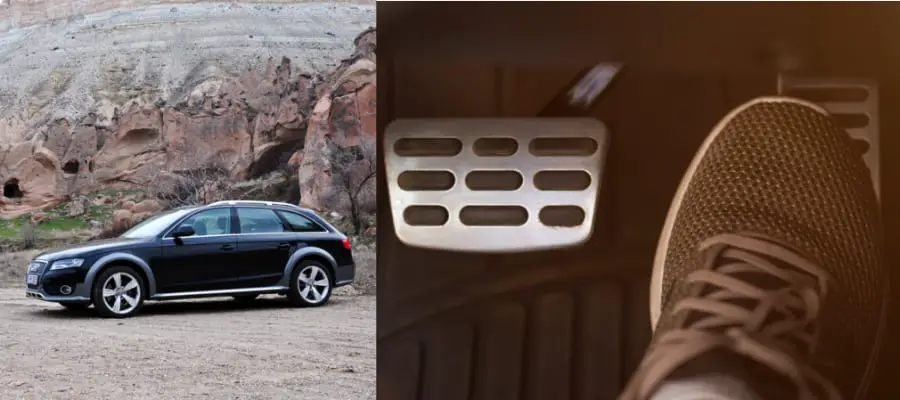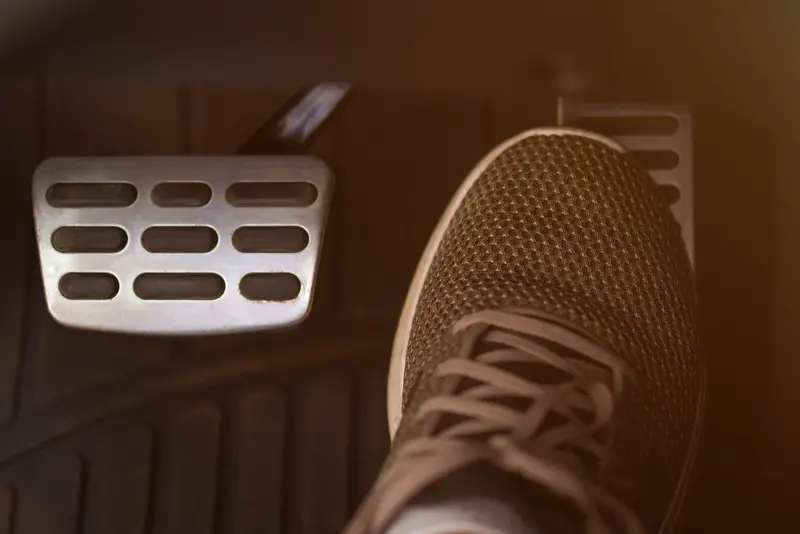
Flooring another person is to surprise or confuse the individual. It leaves a person blinking in wonderment, awe, or incredulity that anyone could be such a dense turnip.
For example, imagine cruising by in a McLaren Elva: now that’s a car that leaves people floored. But if its driver floors it outside the local school, admiration from parents might morph into fury and a quick call to the cops.
However, that’s not what people mean when they say “floor a car”. Let’s go through what it actually means.
To floor a car means putting the “pedal to the metal,” i.e., shoving the gas pedal until it’s flat. The move is hard, fast, and held until the car hits maximum speed, leaving the engine roaring. However, it isn’t recommended as it adds wear and tear to your vehicle.
Flooring a car is fun. That’s a fact. Revving the engine is music to many people’s ears. Manufacturers know this too. Thus, you can go on McLaren’s website and push down the space bar to hear the 702S accelerate from 0 to 212mph.
But how good is it for your car? Does it make a difference if you are driving an electric vehicle? What about revving? Here’s everything you need to know.
Does “Flooring It” Hurt Your Car?
People have a lot of theories when it comes to flooring a car. Consequently, it was a common question thrown at the legendary Magliozzi brothers on their radio show Car Talk and their syndicated Q&A articles. Their answers were typically colorful and hilarious but boiled down to, “Don’t do it.”
Ray once explained to a teenager that flooring starts a chain reaction: “The pistons slam the connecting rods. The connecting rods slam against the crankshaft. The crankshaft slams the transmission. The transmission slams the axles, and on down the line.”
In short: it’s fun to do and keeps mechanics in business.
Does “Flooring It” Occasionally Clear A Car Out?

“Flooring it” to clear out a car is a myth that won’t die. But as mentioned above, plenty of mechanics won’t complain if you do it to your vehicle. After all, they sure do love seeing you and your wallet.
Four Barrel Carburetors Do Need Speed, Sometimes
The notion of “blowing out” a car by “flooring it” hails back to the 70s, during the heyday of the carburetor. These lost out to fuel injection in the 80s and 90s. The famous holdout was Nascar, who eventually tossed in the towel for their 2012 season.
As Popular Mechanics explains, carburetors “frequently needed cleaning” and were impacted by all sorts of factors, including elevation and temperature.
Thus, the idea was that letting your car blast forward every once in a while would clear out the carbon buildup before your next tune-up. But like anything, some folks swore by it, and those that said it was a load of bull.
But like any myth, there is a kernel of truth. Back then, high-performance cars sometimes came with a four-barrel carburetor. These machines only opened their first two barrels for your regular driving, just like everybody else’s automobile.
Thus, if you never gave the performance cars a fast drive, the other two barrels wouldn’t get used, and lack of motion would lead to a gunk up.
So in those cases, the occasional fast drive, with some heavy acceleration, was advantageous. However, you didn’t need to floor it from 0-60 at the stoplight to maintain your four-barrel carburetors.
Flooring it at the get-go risked flooding, choking, and backfiring. Carburetors are special pieces of machinery and like to be treated like queens.
Can You Floor An Electric Car?

Initially, electric cars were not designed with a “floor it” aesthetic. But that’s rapidly changing, with powerful and fast EVs like the Rimac Nevera and Lotus Evija ready to eat up the road. These vehicles might not have the same roar of a gas guzzler, but they’ve got some punch.
“Flooring it” is torque, and electric cars do have it. For example, the Rimac Nevera can go from 0-60 in 1.85 seconds. The Lotus Evija is slower, taking 3 seconds to do the same. Even so, that’s still a figure that deserves respect.
Is It Bad To Floor An Electric Car?
Electric cars are still machines with moving parts and lots of expensive electrics. Thus, it’s still going to shorten its lifespan. There are even EVs whose computers will tell you to knock it off but in a more diplomatic way.
Of course, there are internet debates on whether flooring an EV or a gas guzzler is worse. EVs might fare better engine-wise. But back to those fancy electrics and that even fancier battery, it might be worth listening to the computer and not pushing it. Then again, you only live once.
Is It Bad To Rev Your Engine?

Revving the engine to try to “get it going” is an excellent way to send your car to an early grave. Nor does it help it “warm up” faster.
Modern vehicles don’t need lengthy warm-up times. Many will do fine with only 30 seconds, even in the cold. However, treating it gently for the first 15 minutes out on the road is still wise. After that, the car is warmed up and running at its ideal state.
But revving a cold engine is a harsh thing to do.
When Is It Good To Rev The Engine?
Revving the engine these days is only necessary if you’ve nearly killed your battery and hoping the shock will save it.
When a battery is being charged, the revving can help accelerate the charging. That’s not to say it is good for the car. But for most folks, a flat battery is a one-off bummer of a day, not a habit.
Revving and long car warm-ups were also tactics to get the dear old carburetor going during the dead of winter.
But since modern cars don’t have them, and most drivers do not own an old classic, the need to light money on fire by idling for fifteen minutes after a desperate rev or two first thing at o-dark-early are gone.
Conclusion
Flooring a car to shoot off like a rocket is an undeniable thrill, but it isn’t healthy for your car. Also, unless you a driving a classic with a four-barrel carbonator, hitting high speeds isn’t preventing it from getting “gunked up” or clearing anything out.
